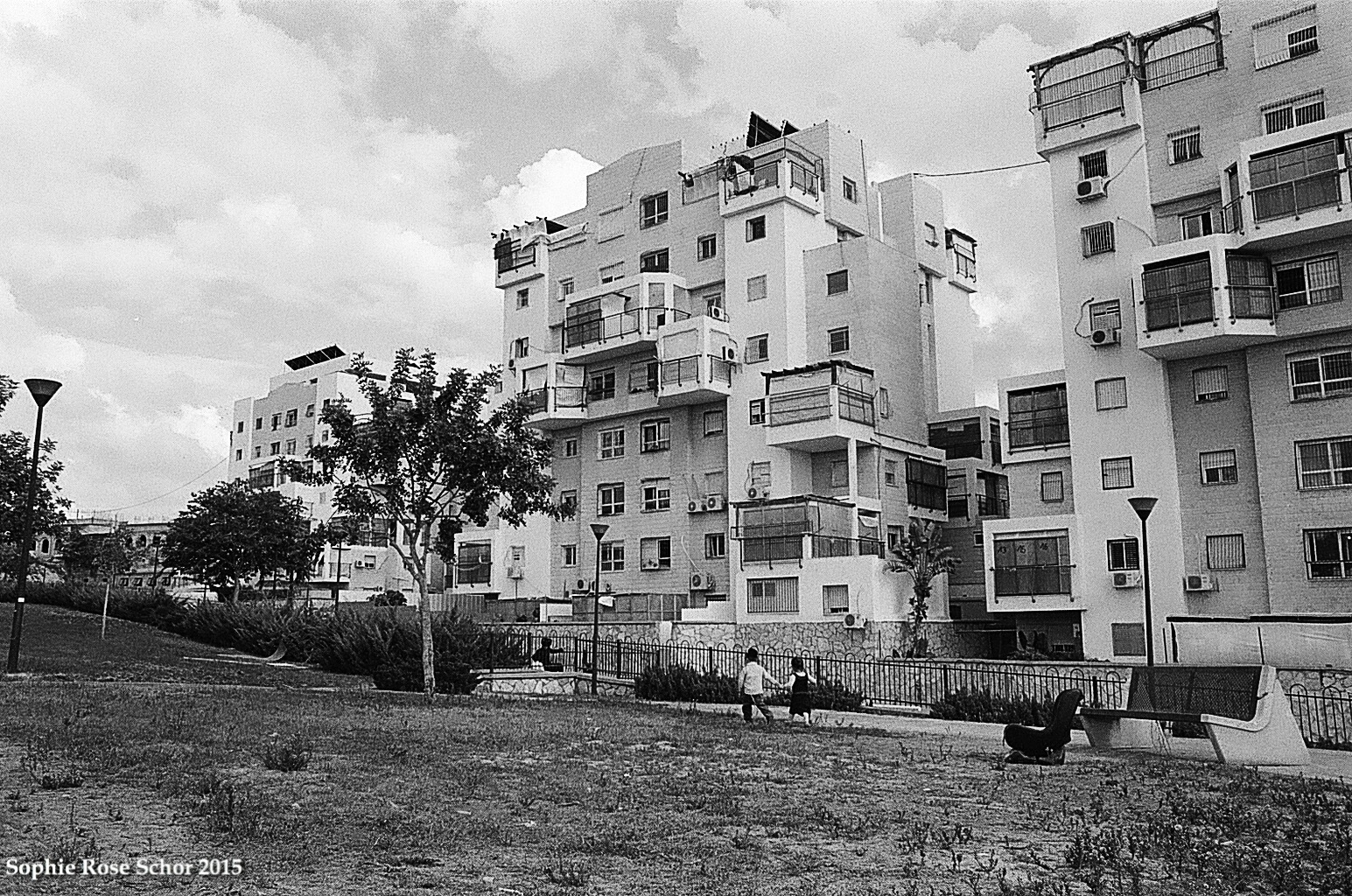This post needs some explanation. The top photo is from Shuhada Street in Hebron. Shuhada Street used to be the economic heart of Hebron; it is located near the Tomb of the Patriarchs, the market, the mosque and the old bus station. After the Cave of the Patriarchs massacre, February 1994, Israel closed the street for Palestinians. The street has been declared a “closed military area.” It is now completely dead except for settlers walking by or soldiers running by to keep in shape. The boxes you see are the metal cages that surround the balconies of the Palestinian homes who had the misfortune to be located on this street. Their front doors have been sealed off and to exit, they must climb up to the roof (see video here). The metal cages were installed as a protective measure against settlers who threw rocks at them. For more information on Shuhada Street and how its closure changed Hebron read this report by Btselem.
The bottom photo was taken in Modi’in Illit, the second largest settlement in the West Bank. It is notorious from the film 5 Broken Cameras as it is the settlement above the Palestinian village Bil’in.
My Haredi cousin, his wife, and their 9 children live there. My cousin explained to me during one visit that the city, for it is a veritable city, is a child’s city. According to his estimation, the median age was 12 and every family had at least 5 kids, some more than 10. I took this photo while I was visiting over the holiday Sukkoth. During Sukkoth, Jews are commanded to celebrate the harvest by sleeping and eating outside for a week. They build a Sukka, or outdoor shelter, according to clear specifications from Rabbinic tradition (3 walls, a roof, rectangular, etc.). In this picture, every balcony in the religious town was converted into a Sukka and the entire hillside was covered by these boxes.
The boxed in balconies were uncannily similar.
A friend of mine directed an amazing 9-minute film about life in Hebron, check out Hebron is Beautiful:

